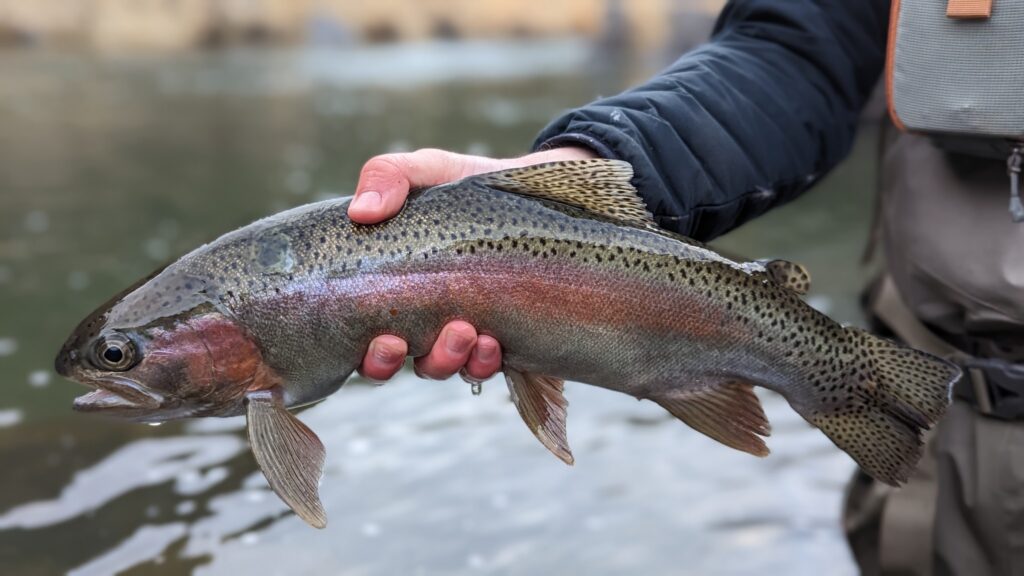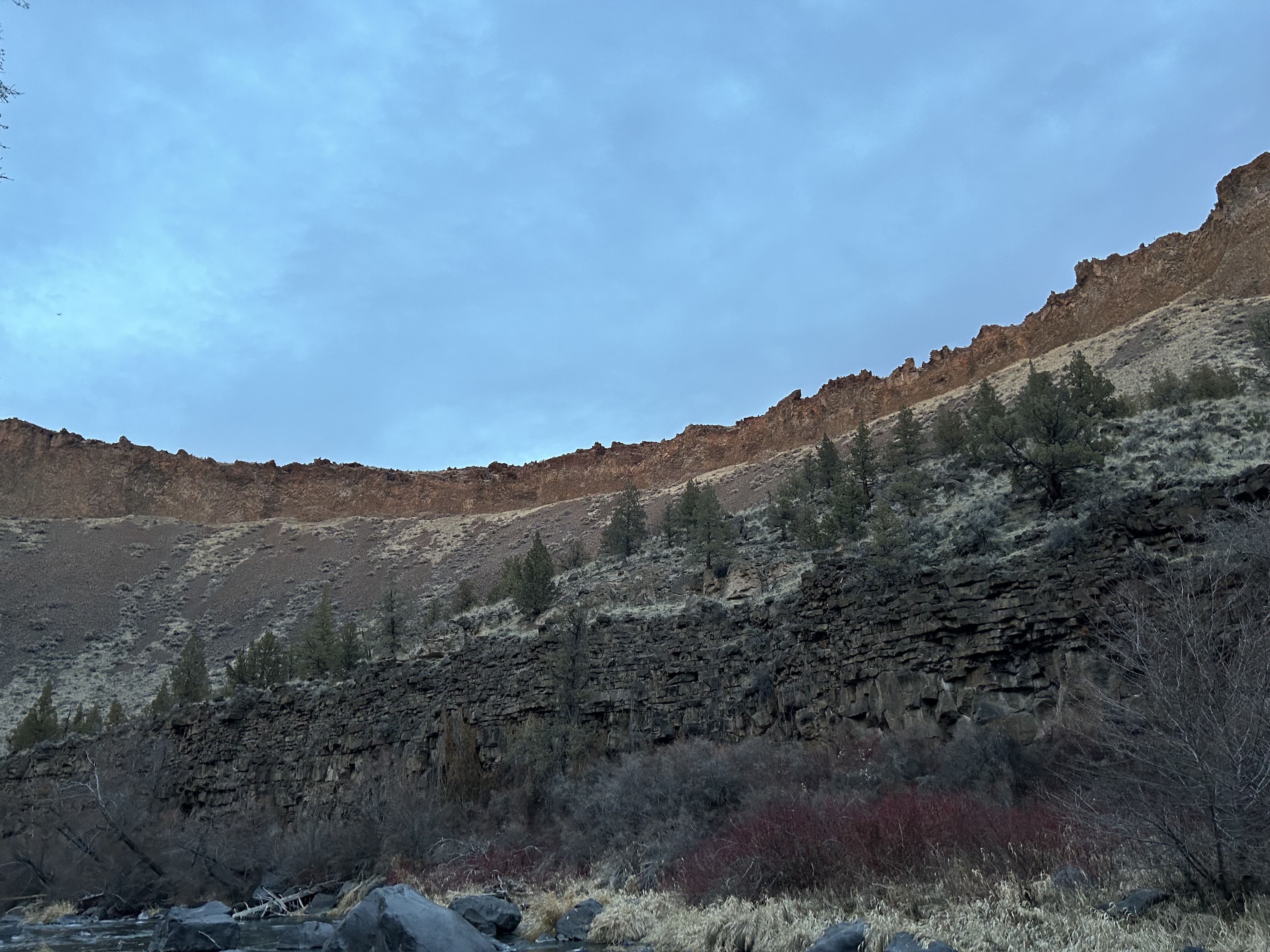“See?” Josh gestured to a low section of canyon wall. The stream behind us smoothed out into a juicy looking piece of water, but for a few minutes I faced the other direction, staring down the sketches in the Central Oregon basalt.
Many of the pictographs were faded, but they stood out enough to be a puzzling contrast on the rocks. They resembled nothing recognizable— just a series of long maroon squiggles and rows of thumb-sized smudges. Snakes maybe, or an artist’s interpretation of the river itself? Some sort of fishermen’s tally, measuring a successful day? They were likely very, very old, their purpose long lost with the people that made them. I was in awe.


The fishing ended up being pretty good, and the paintings became a regular landmark for me in the canyon. I didn’t always stop and stare, but I couldn’t ever walk by without acknowledging their presence on the wall as I passed. There was something so stirring about the drawings. They placed me in nature in a way I had never felt in the East, where most signs of Indigenous occupation had long been picked through, developed, graffitied, clear cut. This land had meant something to someone millenia before it became a fly fisherman’s playground, but the distant shared use still gave me a feeling of mysterious kinship.
Oregon is home to some of the earliest evidence of human occupation on the American continent. In the Paisley Caves, some 100 miles southeast of where I lived in Bend, archaeologists discovered fossilized feces (copalites, for you high brows) found to be over 14,000 years old. The individuals that left them lived during the Pleistocene, a period of glacial retreat that carved out the high plains and basins that still sprawl across the eastern half of the state today. People there lived a nomadic lifestyle dictated by the seasons and food availability. They developed tools like bows and arrows for hunting now-extinct megafauna. They formed ethnic and cultural identities unique to their ecological regions and experiences. And for reasons still not completely known to us, they’d occasionally draw on rocks.
Coal produced black, clay for white, and iron oxides made red. Subjects and artistic styles varied over time, allowing researchers to roughly date the age of many of the pictographs. The relatively simple shapes scrawled in my local canyon, as frustrating as they were to understand, indicated that they could be part of one of the oldest brackets of art— up to a few thousand years in age.
As I ventured deeper into the system that first season, I found more drawings. They were always in the same colors and style. You could go miles without seeing one, then find a stretch dotted with mystifying shapes. Sometimes I’d break for water below a sketch-covered outcrop, look out over the sunbleached canyon in midsummer, and try to imagine what went on here. Salmon and steelhead once regularly reached this stream, and the narrowness of the walls here would have made a great pinch point for anglers to intercept them. The runs of fish must have been so important. By the time dams were built and the anadromous visitors disappeared, the people who drew on the walls and their way of life were well in the past. What exactly they were doing here, let alone the meanings of the pictures they left behind, will never be fully known. For those of us that are drawn to the old signs, from archeological experts down to the curious angler, a large part of the best we can do is look and wonder.
Months later, I dropped down to the river again on a short but mild winter day. I was alone this time— something I hadn’t felt comfortable doing until recently in the canyon’s remoteness. My first solo trips had been relatively routine. I didn’t venture far from my well known areas. I passed the ever-present entryway pictographs, dimmed in the grey light of a sunless canyon floor.
On one of my last casts I landed a beauty— A clean redband, deep purple and green like the sage, twenty inches. I’d gone a bit further downstream than I ever had before to get to this spot. I opted to make for the canyon wall before working to a familiar game trail that would begin the long climb out.
I picked my way off the brushy bank and reached a section of wall that was new to me. Coincidentally, I’d come out just where a broom closet-sized indent thrust into the rock, and with enough daylight to reveal the shaded interior.
I could see the drawings before I even entered. There were dozens of them, striking in quality and detail. I made out four-legged creatures and a faceless stick figure. The ceiling of the small overhang was blackened from ancient fires. I followed every inch of the wall, transfixed for the longest time since I’d been on my first trip into the rocks. The river, once again ignored, hurried quietly at my back. There it was— the unavoidable wonder at the placement of this supposed camp, the purpose of those who’d stayed here, the fish that drew them to this system, the fish that remained, how much I couldn’t know about it all but how tightly I still clung onto a tangible feeling of being human in this place. It just seemed like a presence was still here, lingering among the juniper thickets and frozen stones. I looked up towards the ridge, then inexplicably turned back to the decorated wall. “Thanks,” I said with a voice raised over the watery canyon echoes.
Then I spun towards the distant trail and headed skyward.


